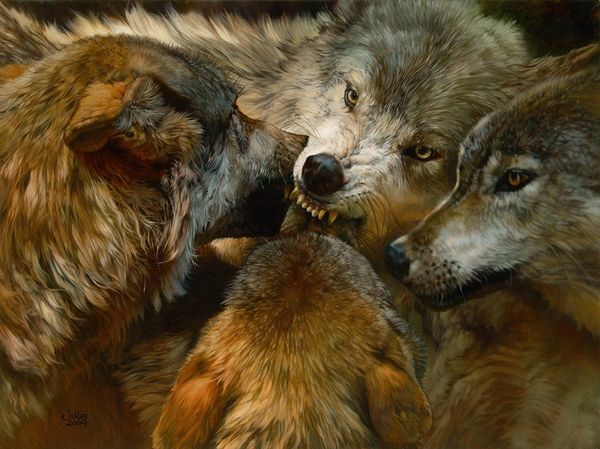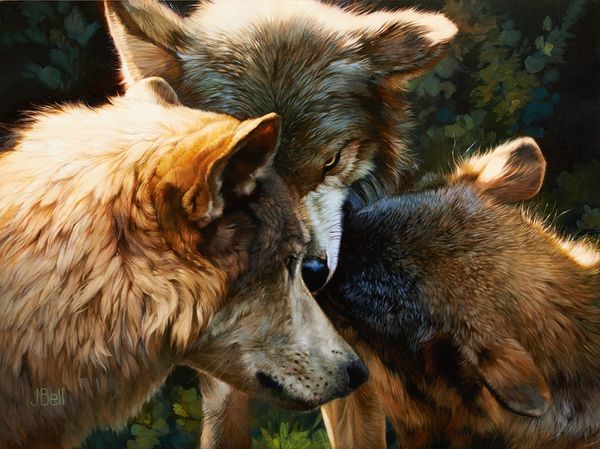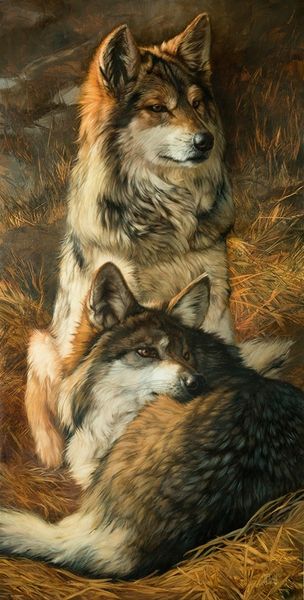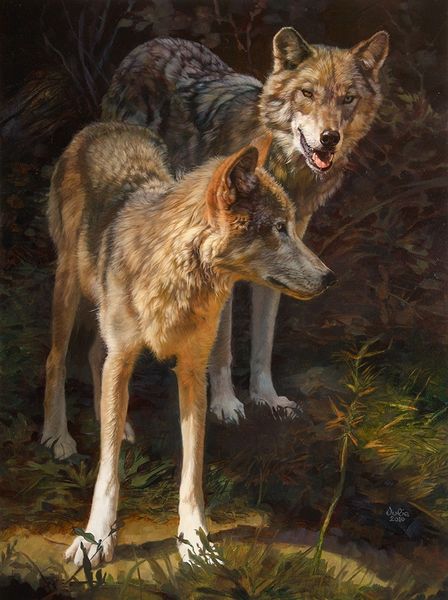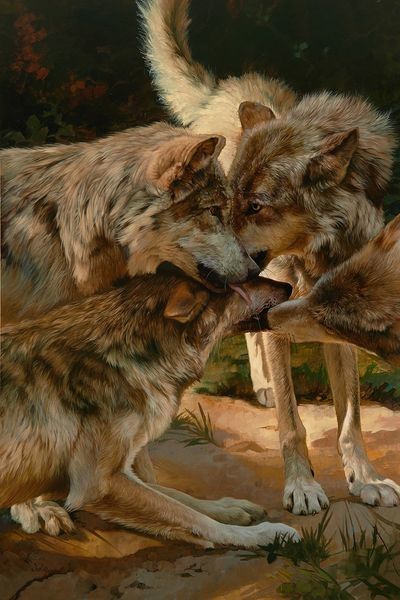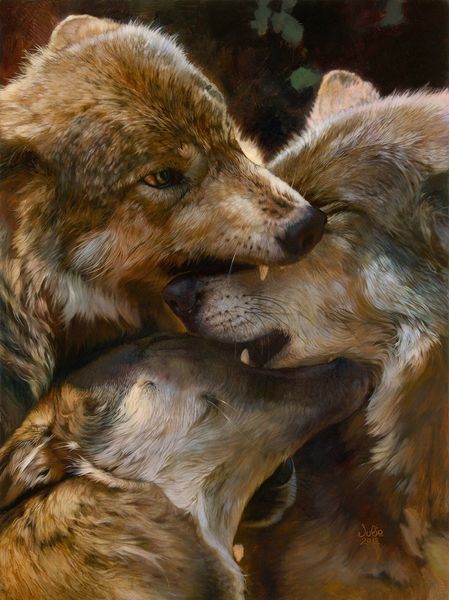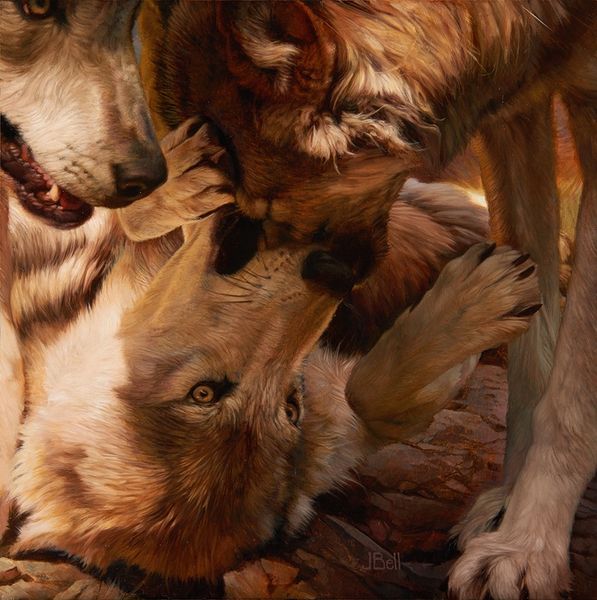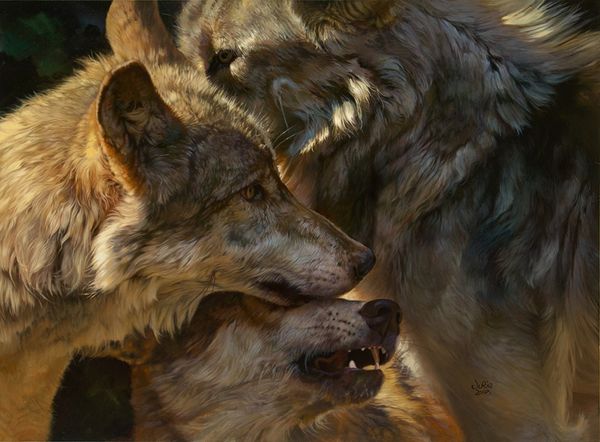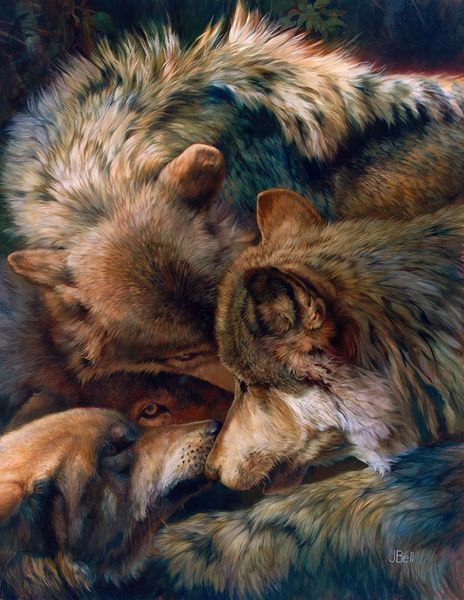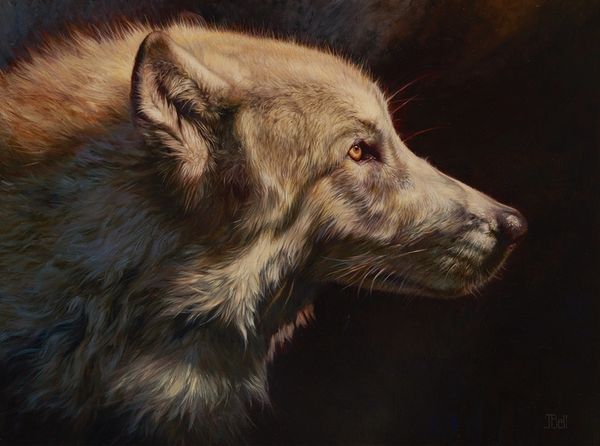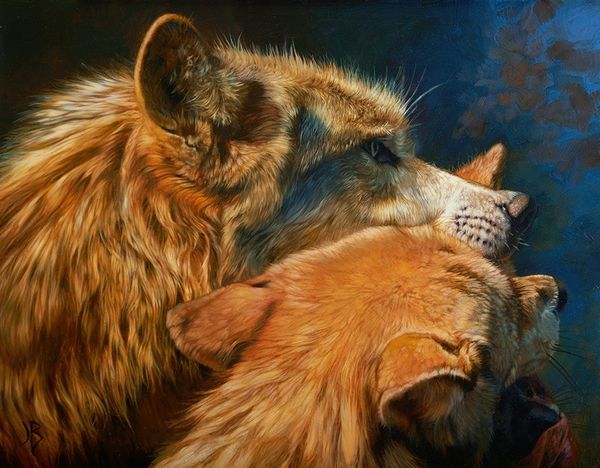
painting
#
portrait
#
animal
#
painting
#
landscape
#
nature
#
ecological
#
animal portrait
#
animal photography
#
realism
Copyright: Modern Artists: Artvee
Curator: Julie Bell’s painting, “Sentry,” really arrests the eye. What strikes you initially about this piece? Editor: Immediately, it’s the gaze—the shared direction, the intensity. I’m also drawn to how the artist juxtaposes these three wolves: dark, light, and almost an echo of a wolf. Their textures practically beg to be touched. Curator: Bell often paints in a style we could categorize as realism. Considering its themes, one might say the work aims to celebrate ecological awareness. Given wolves' complex history with humans, and the role of wildlife art in shaping public perception, "Sentry" engages in contemporary conservation narratives. Editor: That is something. Looking at her rendering, Bell obviously gives enormous attention to form, the gradations of light across the animals’ fur and bone. Her technique also guides our viewing experience, almost framing the image as one sees in, let's say, romantic landscape paintings, the Hudson River School comes to my mind. Curator: True. And one might argue that this painting contributes to romantic notions surrounding the ‘wild,’ somewhat blurring lines between idealized wilderness and our human impacts. Wildlife art often occupies such tricky ground. What is at stake here? Consider the symbolism invested in animals such as the wolf. They can signify wilderness, threat, or, increasingly, ecological balance, especially now with discussions around re-wilding. Editor: Yes, and while all of that exists, from my perspective the artist also captures something undeniably raw. The lines are soft, yet it still depicts tension. Do you think the title invites reading this animal as guarding a certain place? I do wonder to what extent these kind of readings shape the impact. Curator: Potentially. It depends on the viewer's biases when presented with certain information. We are invited, I think, to ask, What are they protecting? Who are they guarding? A location, a status quo? It leaves questions, it invites the conversation. Editor: Agreed. It’s always so great to dissect Julie Bell's way of composing; it challenges me every time. Curator: It brings many discussions that can lead to something great. It’s hard to separate art and society, the social always makes its mark on art.
Comments
No comments
Be the first to comment and join the conversation on the ultimate creative platform.
